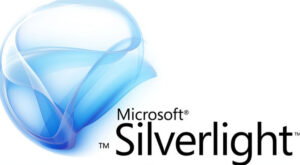
The early 2000s witnessed the rise of Linux as a powerful and reliable alternative to proprietary operating systems. In this article, we’ll delve into the rivalry between two of the most prominent Linux distributions of the time, SUSE and Red Hat. The year 2004 marked a pivotal moment in their competition, as they vied for dominance in the Linux market and the enterprise world.
SUSE:
- Background: SUSE Linux, initially developed in Germany, had gained recognition for its user-friendly approach and strong European presence. SUSE is known for its YaST (Yet another Setup Tool) configuration tool, which made it accessible to a wide range of users.
- Strengths:
- Community and Enterprise Versions: SUSE offered both community and enterprise editions, catering to hobbyists and businesses.
- Strong Desktop Presence: SUSE Linux Desktop is a notable offering for individual users and enterprises seeking a Linux desktop solution.
- Strong European Market Presence: SUSE’s strong presence in Europe contributed to its popularity in the region.
- Challenges:
- Competition with Red Hat: SUSE faced stiff competition from Red Hat in the enterprise Linux market.
- Global Reach: SUSE aimed to expand its global presence to challenge Red Hat’s dominance worldwide.
Red Hat:
- Background: Red Hat Linux had already established itself as a formidable player in the Linux world. The company is a pioneer in offering enterprise-grade Linux solutions and support.
- Strengths:
- Enterprise Focus: Red Hat is a dominant force in the enterprise Linux market, offering long-term support and certified hardware compatibility.
- RHEL (Red Hat Enterprise Linux): RHEL is one of the most trusted choices for businesses seeking Linux solutions, backed by comprehensive support and a rich ecosystem of applications.
- Partnerships: Red Hat forged partnerships with major technology companies, solidifying its position as an industry leader.
- Challenges:
- Competition from SUSE: SUSE’s growing presence in Europe and ambition to expand globally posed a challenge to Red Hat’s global dominance.
2004: A Pivotal Year
In 2004, both SUSE and Red Hat made strategic moves to strengthen their positions:
- Acquisition of SUSE: In a significant development, Novell acquired SUSE Linux in January 2004. This acquisition brought substantial financial backing to SUSE and fueled its ambition to compete with Red Hat on a global scale.
- Red Hat Enterprise Linux 4 (RHEL 4): Red Hat released RHEL 4, reinforcing its commitment to the enterprise market. RHEL 4 introduced a range of features and improvements, further solidifying Red Hat’s position as a leader in enterprise Linux.
The Outcome
The competition between SUSE and Red Hat persisted, and both companies continued to play vital roles in the growth of Linux in the enterprise world. While SUSE made significant strides and gained financial support through the Novell acquisition, Red Hat maintained its dominant position in the global enterprise market.
In the years that followed, both SUSE and Red Hat continued to evolve and adapt to changing industry dynamics. SUSE eventually became part of the larger Micro Focus organization, while Red Hat continued to expand its product and service offerings.
Conclusion
The rivalry between SUSE and Red Hat in 2004 is a testament to the growing importance of Linux in the enterprise world. These Linux distributions paved the way for open-source technologies to challenge proprietary solutions, ultimately leading to greater choices and innovation for businesses and individuals.



